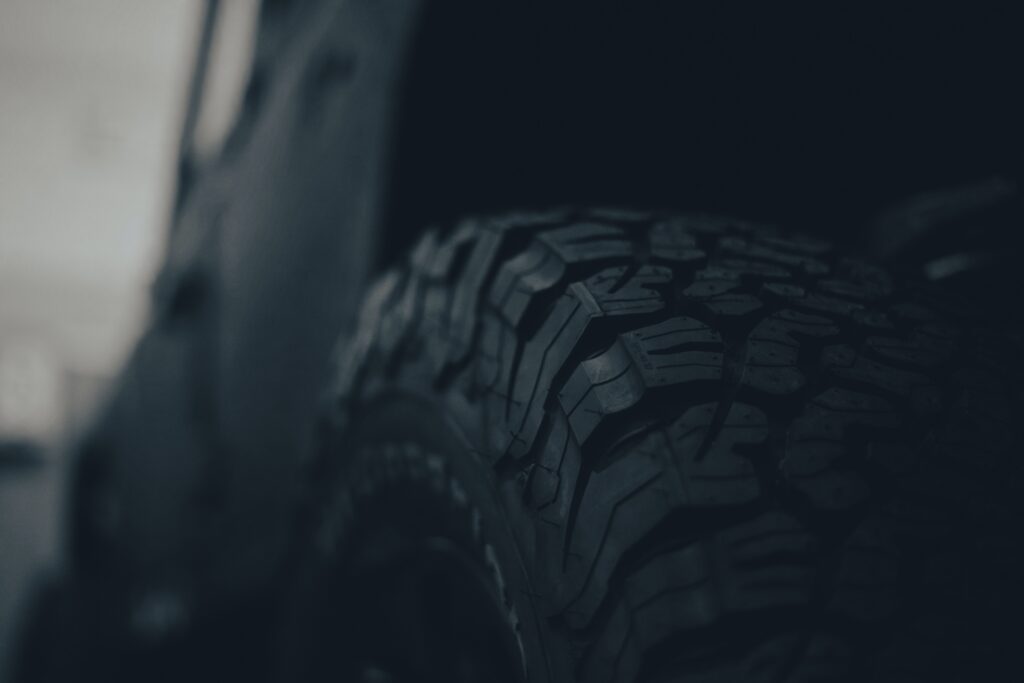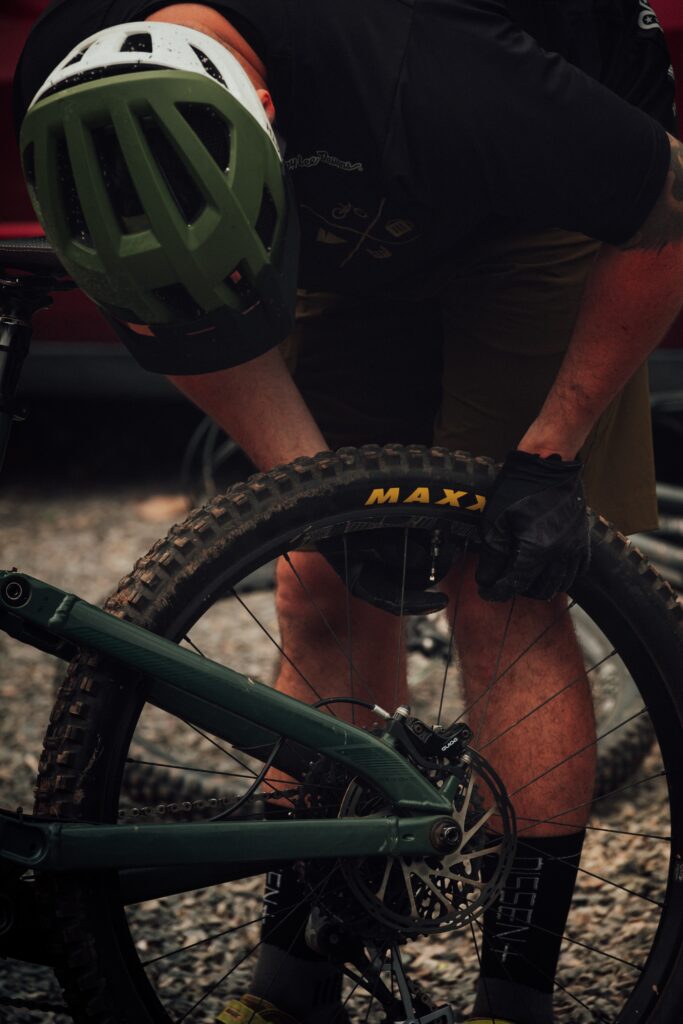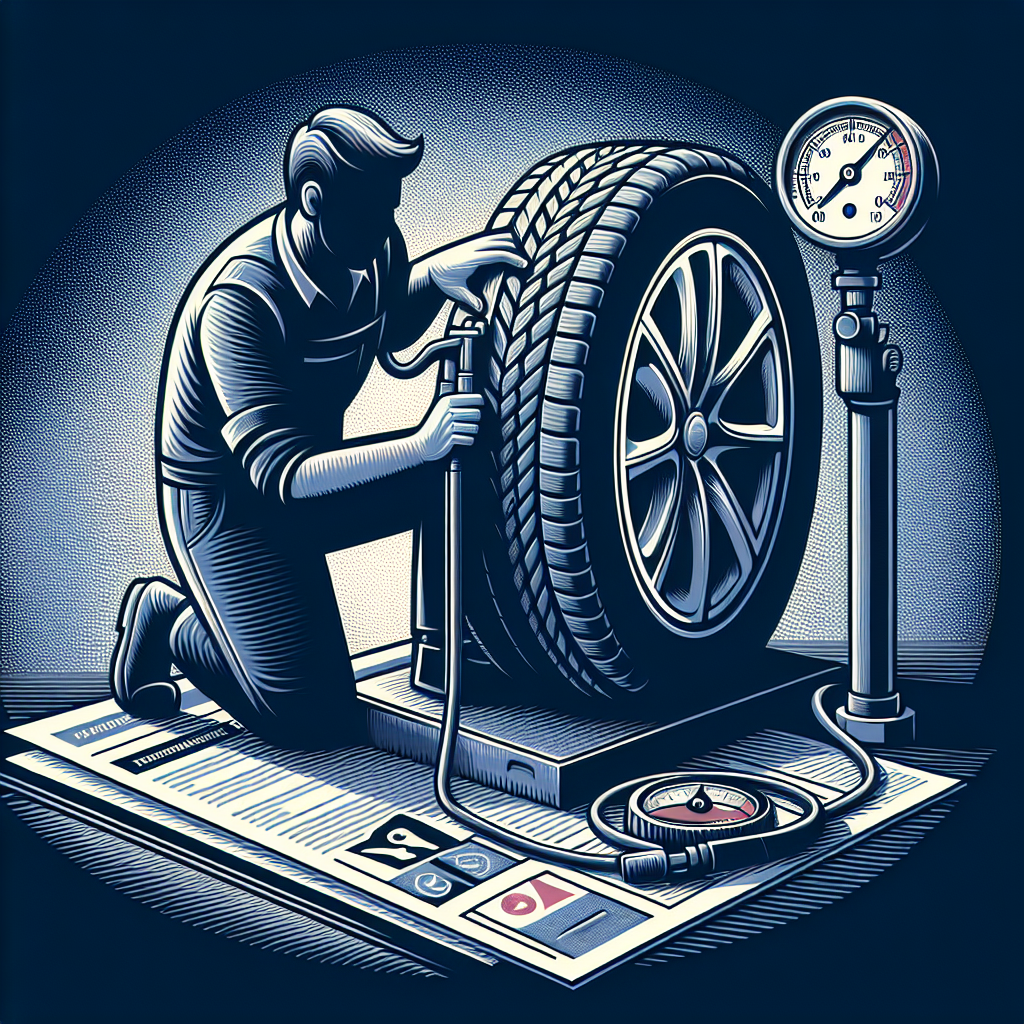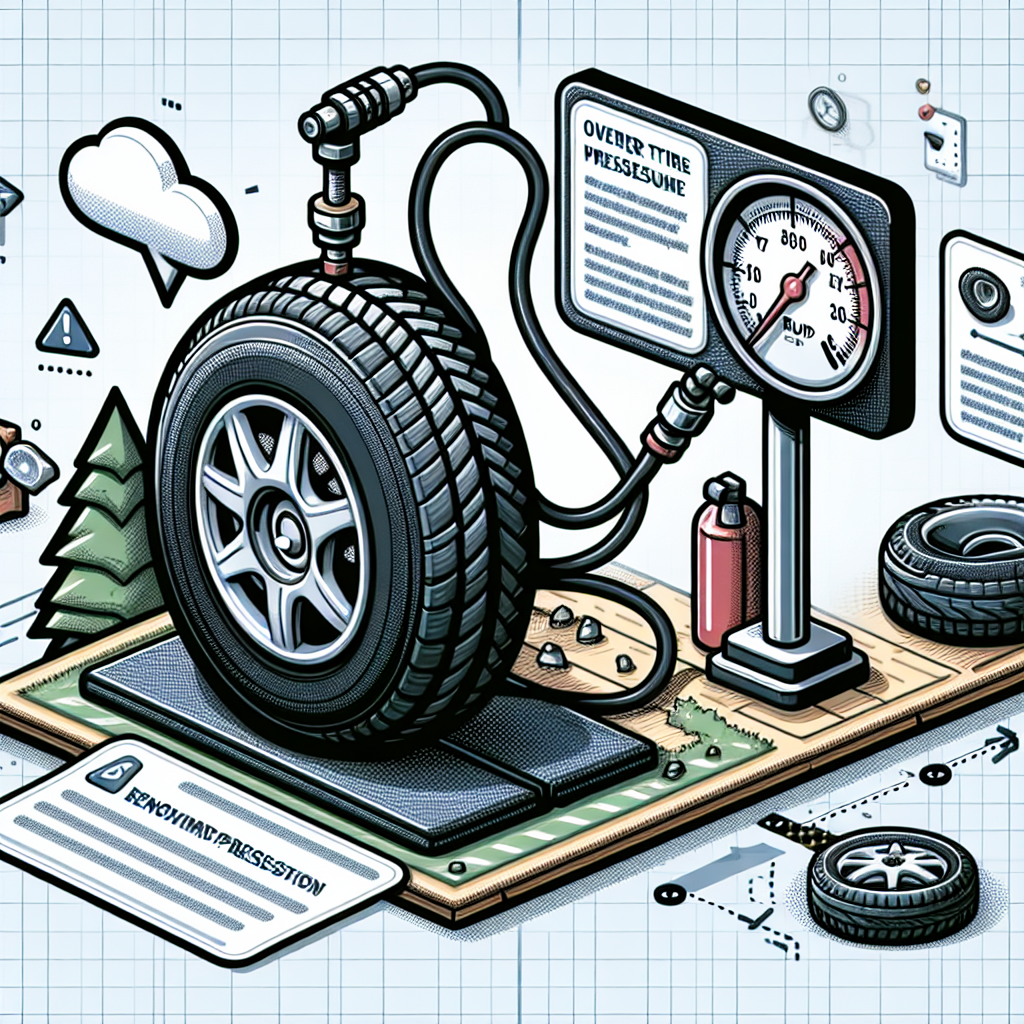You’re all set for a road trip, but before hitting the open road, you want to make sure your tires are properly inflated. However, you don’t want to risk overinflating them and potentially causing a blowout. So, how can you ensure you don’t go overboard when using a pump to fill up your tires? In this article, we’ll explore some simple yet effective tips to help you prevent overinflating your tires and keep your journey smooth and safe.

Choose the right tire pressure gauge
Digital tire pressure gauges
When it comes to choosing a tire pressure gauge, there are two main types to consider: digital and analog. Digital tire pressure gauges are becoming increasingly popular due to their ease of use and accuracy. These gauges have a digital display that provides a clear and precise reading of your tire pressure. They often have additional features such as backlighting for visibility in low light conditions and the ability to switch between different units of measurement.
Analog tire pressure gauges
Analog tire pressure gauges, on the other hand, have a traditional dial that indicates the tire pressure. While they may not be as precise as digital gauges, they are still reliable and commonly used. Analog gauges come in various designs and sizes, making them portable and easy to use. Some people prefer the simplicity and durability of analog gauges, as they don’t require batteries and can withstand rough handling.
Accuracy of the gauge
Regardless of whether you choose a digital or analog tire pressure gauge, accuracy is crucial. It’s important to invest in a gauge that is known for its accuracy and consistency. Look for gauges that are recommended by professionals or have positive customer reviews. Keep in mind that gauges can lose accuracy over time, so it’s a good idea to regularly compare the reading from your gauge with another trusted gauge to ensure it is still reliable.
Read the tire sidewall
Determine the correct tire pressure
To prevent overinflating your tires, you need to know the correct tire pressure for your vehicle. The first step is to find the recommended tire pressure, which is typically indicated on a sticker inside the driver’s side door jamb or in the owner’s manual. It’s important to use the recommended pressure for your vehicle, as overinflating or underinflating can affect the performance and safety of your tires.
Understand the tire’s load rating
The tire’s sidewall also contains information about its load rating. This rating indicates the maximum weight the tire can safely support. It’s essential to consider the load rating when determining the correct tire pressure, as underinflated tires can lead to increased heat buildup and potential tire failure. Overinflating the tires to compensate for a heavy load is not recommended and can lead to reduced traction, discomfort, and uneven wear.
Check for any additional notes or recommendations
In addition to the recommended tire pressure and load rating, the tire sidewall may include additional notes or recommendations. These notes may provide specific guidelines for different driving conditions or suggest different pressure levels for different tire sizes. It’s important to pay attention to these notes and adhere to any specific recommendations from the tire manufacturer.
Check the owner’s manual
Find the recommended tire pressure
Another reliable source for determining the correct tire pressure is the owner’s manual of your vehicle. The manual often includes detailed information about tire maintenance, including the recommended tire pressure. Some vehicles may have different recommendations depending on the load and driving conditions, so it’s crucial to find the specific information for your vehicle.
Understand the manufacturer’s guidelines
The owner’s manual will also provide guidelines from the vehicle manufacturer regarding tire pressure. This may include information about the desired pressure for different driving conditions, such as highway driving or off-road conditions. Following these guidelines can help ensure optimal tire performance and prolong the life of your tires.
Consider the load and driving conditions
In addition to the recommended tire pressure, the owner’s manual may provide information on adjusting the pressure based on the load and driving conditions. For example, if you frequently carry heavy loads or tow a trailer, the manual may suggest increasing the tire pressure to compensate for the added weight. Similarly, if you often drive in extreme weather conditions, the manual may recommend adjusting the pressure accordingly. Considering these factors can help prevent overinflating your tires and optimize their performance.
Use a high-quality tire pump
Choose a reliable pump with an accurate pressure gauge
To ensure you don’t overinflate your tires, it’s essential to use a high-quality tire pump. Look for a pump that is known for its reliability and accuracy in maintaining the desired pressure. Some pumps come with a built-in pressure gauge, allowing you to monitor the inflation process without the need for a separate gauge.
Ensure the pump has an automatic shut-off feature
An automatic shut-off feature is an important safety measure that prevents overinflation. This feature allows the pump to automatically stop when the desired pressure is reached, eliminating the risk of overinflating and damaging the tire. When choosing a tire pump, make sure it has this feature to ensure safe and efficient inflation.
Opt for a pump with a pressure release valve
In addition to an automatic shut-off feature, a pressure release valve is another valuable feature to look for in a tire pump. This valve allows you to release excess pressure from the tire, giving you the ability to fine-tune the inflation and avoid overinflating. Being able to release pressure without removing the pump from the valve stem is convenient and helps prevent overinflation incidents.

Test the pump gauge accuracy
Compare the pump gauge with a trusted tire pressure gauge
Even if your pump has a built-in pressure gauge, it’s still advisable to compare its accuracy with a trusted tire pressure gauge. This ensures that the readings from your pump’s gauge are consistent and reliable. If the readings differ significantly, it may be necessary to rely on the separate gauge for accurate pressure measurements.
Invest in a separate pressure gauge if necessary
If the pump’s gauge is consistently inaccurate, it may be worth investing in a separate pressure gauge. This ensures you have a reliable tool for measuring tire pressure, even if the pump’s gauge is not as accurate. It’s important to prioritize accuracy when it comes to maintaining optimal tire pressure.
Regularly calibrate the pump gauge
To maintain the accuracy of your pump’s gauge, it’s a good practice to regularly calibrate it. This can be done by comparing the readings to a trusted gauge and adjusting the pump gauge if necessary. Regular calibration ensures that your pump provides accurate pressure readings and helps prevent overinflation.
Inflate the tires in small increments
Measure the current tire pressure
Before inflating your tires, it’s crucial to measure the current pressure. This allows you to determine how much air needs to be added to reach the desired pressure without overinflating. Use your reliable pressure gauge to get an accurate reading before starting the inflation process.
Add air in small amounts
To prevent overinflation, it’s best to add air in small increments. Start by adding a few pounds of air and then check the pressure again. Repeat this process until you reach the desired pressure, taking breaks to allow the tires to cool down if necessary. By inflating in small amounts, you can closely monitor the pressure and avoid overinflating.
Regularly check the pressure during inflation
As you inflate the tires, it’s important to regularly check the pressure to ensure you’re not overinflating. This can be done by pausing the inflation process and using a reliable pressure gauge to get an accurate reading. By checking the pressure periodically, you can make adjustments as needed to prevent overinflation.

Monitor the tire pressure while inflating
Check the tire pressure regularly during inflation
Throughout the inflation process, it’s crucial to check the tire pressure regularly. This helps ensure that you are maintaining the desired pressure and not overinflating the tires. By monitoring the pressure at frequent intervals, you can prevent any unwanted pressure spikes and maintain optimal tire performance.
Avoid distractions to ensure accuracy
When inflating your tires, it’s important to minimize distractions to ensure accuracy. Focus on the inflation process and avoid multitasking to prevent overinflation. Distractions can lead to unintentionally overinflating the tires, which can have negative consequences for tire performance and safety.
Make adjustments as necessary
If you notice that the pressure is increasing too quickly or nearing the maximum recommended limit, it’s essential to make adjustments to prevent overinflation. This can include reducing the airflow, releasing excess pressure, or pausing the inflation process temporarily. Making these adjustments as necessary helps maintain the desired pressure without overinflating.
Check tire pressure after inflation
Use a trusted tire pressure gauge to measure the pressure
Once you have completed the inflation process, it’s important to use a trusted tire pressure gauge to measure the pressure. This ensures that the tires are not overinflated and are at the recommended pressure for optimal performance. Avoid relying solely on the pump’s gauge, as it may not always provide accurate readings.
Adjust the pressure if needed
If you find that the tires are overinflated after the inflation process, it’s crucial to make the necessary adjustments. This can be done by releasing air in small increments until the desired pressure is reached. Overinflated tires can lead to reduced traction, uneven wear, and other safety risks, so it’s important to address any overinflation promptly.
Ensure all tires are properly inflated
After checking the tire pressure and making any necessary adjustments, it’s important to ensure that all tires are properly inflated. This means checking the pressure in each tire and confirming that they all meet the recommended pressure levels. Properly inflated tires contribute to better fuel efficiency, improved handling, and increased overall safety.

Avoid overinflating with temperature changes
Understand the effect of temperature on tire pressure
Temperature changes can have a significant impact on tire pressure. As the temperature increases, the air inside the tire expands and leads to an increase in pressure. Conversely, as the temperature decreases, the air contracts, leading to a decrease in pressure. It’s important to be mindful of these temperature-related pressure changes and adjust the tire pressure accordingly to avoid overinflation.
Monitor the tire pressure in different weather conditions
Different weather conditions can impact tire pressure, so it’s important to regularly monitor the pressure and make adjustments as needed. For example, during hot summer months, the tire pressure may increase due to the heat. On the other hand, during colder winter months, the tire pressure may decrease. By monitoring the pressure in different weather conditions and making necessary adjustments, you can prevent overinflation caused by temperature changes.
Make adjustments as needed
If you notice significant changes in tire pressure due to temperature fluctuations, it’s important to make the necessary adjustments. This can be done by releasing air or adding air to maintain the recommended pressure. By proactively addressing temperature-related pressure changes, you can prevent overinflation and ensure optimal tire performance in different weather conditions.
Consult a professional if unsure
Seek assistance from a mechanic or tire specialist
If you’re unsure about the proper tire inflation for your vehicle or if you’re experiencing difficulty preventing overinflation, it’s wise to seek assistance from a professional. A mechanic or tire specialist can provide expert advice and guidance based on your specific vehicle and driving habits. They can help you determine the correct tire pressure, suggest the appropriate tire pump, and guide you through the inflation process.
Ask for guidance on proper tire inflation
Professional guidance can be invaluable when it comes to proper tire inflation. Ask the mechanic or tire specialist to explain the recommended tire pressure for your vehicle and provide any specific instructions or considerations. They may also offer tips on maintaining optimal tire pressure and preventing overinflation.
Get advice based on your specific vehicle and driving habits
Every vehicle is different, and individual driving habits can also affect tire pressure. By consulting with a professional, you can receive personalized advice based on your specific vehicle and driving habits. This ensures that you’re taking into account any unique factors that may impact tire inflation and helps you prevent overinflation effectively.
In conclusion, preventing overinflating tires with a pump requires careful consideration of the tire pressure gauge, understanding the correct tire pressure, utilizing a high-quality tire pump, testing the pump gauge accuracy, inflating in small increments, monitoring the pressure while inflating, checking the tire pressure after inflation, avoiding overinflation with temperature changes, and consulting a professional if unsure. By following these guidelines and keeping tire pressure at the recommended levels, you can ensure optimal tire performance, prolong tire life, and maintain safe driving conditions.


